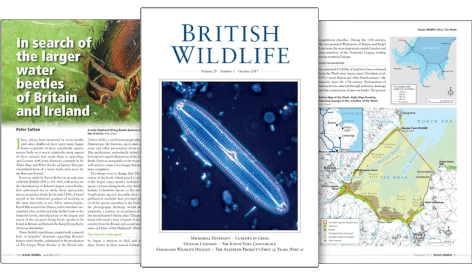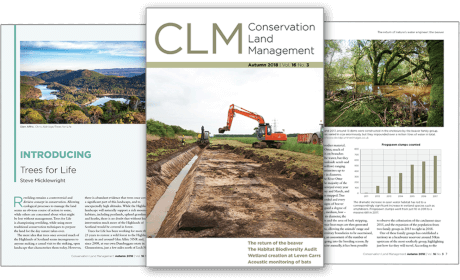Welcome to the December 2025 edition of the NHBS Monthly Catalogue, which lists all new titles added to our website in the last month.
After some new titles dropping in at the last minute, we are leading this month with upcoming bird books. HarperCollins has announced Collins British Bird Identifier: Easy Naming of All Species Using Only Five Features, due in April. Another high-profile title is the next collaboration between Robert Macfarlane and Jackie Morris on The Book of Birds: A Field Guide to Wonder and Loss, due in May from Hamish Hamilton. Elliott & Thompson have announced the paperback of Hannah Bourne-Taylor's Nature Needs You: The Fight to Save Our Swifts, due in May. Also out in May from Helm is The Complete Guide to Patch Birding: Making the Most of Your Local Area. In that context, readers may also want to take note of the Cheshire and Wirral Bird Report 2023, which is in stock now.
For herpetologists, we have two volumes of A Paradise for Reptiles: Lizards, Snakes, and Giant Tortoises of the Galápagos Islands: Volume 1: Tortoises, Geckos and Snakes, and Volume 2: Marine Iguanas, Land Iguanas, and Lava Lizards, which were recently published by RIT Cary Graphic Arts Press. Science Press in China has just published Amphibians of China, Volume 2, while Edition Chimaira has announced Reptiles and Amphibians of Japan for March. For readers interested in the history of the discipline, we have The Herpetological Contributions of Giorgio Jan (1791-1866): With an Introduction, Annotated Bibliography, Synopsis of Herpetological Taxa, and a Comprehensive Guide to the "Iconographie Générale des Ophidiens", published by the Society for the Study of Amphibians and Reptiles.
On the subject of invertebrates, Springer has just published Spider Biology by arachnologist Rainer Foelix, who previously published three editions of his textbook on spiders with Cambridge University Press. For entomologists, we have Insect Flight: An Insect-Eye View of Flight Behaviour in the Wild from Pelagic Publishing and Spittlebugs: Biology, Ecology, and Economic Impact from Comstock, both due in May. For beetle specialists, we have The Cetoniinae of the World, Volume 1 and Volume 2 from Gerhard Beinhundner, as well as Subfamily Prioninae of the World, Volume 1: Geographical Guide to the Longhorn Beetles from Insect Books, which is the first volume of a new series.
For marine biologists, we have two books focusing on different groups, both of which are due in May. Princeton University Press has announced Wild Orcas: A Deep Dive into the World of Killer Whales, while Wild Nature Press will release a new Seasearch Guide, Marine Crustaceans of Britain and Ireland.
For botanists, we have a diverse range of titles this month. Two field guides are Field Guide of Common Grasses of Madagascar, due in April from the Royal Botanic Gardens, Kew, and the new BSBI Handbook Wild Roses of Great Britain and Ireland. Kew has also announced the identification guide Broomrapes of the World, due in March. On the subject of environmental history, the paperback of Forgotten Forests: Twelve Thousand Years of British and Irish Woodlands is due in May from William Collins. Two new nature writing titles due in May are Peter Marren's The Devil's Garden: The World's Most Sinister Plants and Fungi, published by Bloomsbury, and John Wright's Grasslands: The Intricate Life of Britain's Hidden Habitats, published by Profile Books. Two richly illustrated books are Flora of the Orinoco: Aquatic and Semi-Aquatic Plants from Mikolji Corp, out now, and The Album of Plant Families: An Illustrated Exploration of Nature's Beauty and Bounty, due in May from Abbeville Press. Pivoting to mycology, The Complete Fungi: Evolution, Diversity, and Ecology is due in May from Princeton University Press.
On the topic of wildlife conservation and other environmental issues, the paperback of Robert Macfarlane's Is a River Alive? is due in March from Penguin Books, while the University of Chicago Press has announced Rarities: Conservation Science in a Time of Unintended Consequences for May. Cambridge University Press has announced the second edition of Mark Z. Jacobson's book for January and retitled it to Still No Miracles Needed: How Today's Technology Can Save Our Climate and Clean Our Air. In May, they will release Rebuilding an Ecosystem: Integrating Applied Research and Restoration, a new addition to the Ecology, Biodiversity and Conservation series.
For evolutionary biologists, we have two notable titles. W.H. Freeman has just published the fourth edition of Douglas J. Emlen and Carl Zimmer's textbook Evolution: Making Sense of Life, while Torva, a Penguin Books imprint, has announced David George Haskell's How Flowers Made Our World: The Story of Nature's Revolutionaries for March. Palaeontologists can look out for The Evolution and Classification of the Cretaceous Ammonites and their Jurassic Progenitors, published by CRC Press.
Finally, we have a tranche of diverse ecological books. For the longest time, there have been no good practical books on sound recording, and then two come along at once. In April, Crowood Press will publish Field Recording: A Practical Guide, followed in May by Perspectives on Wildlife Sound Recording: An Overview of Modern Practice from Pelagic Publishing. Finally, Springer has announced Death Feigning: Mechanisms, Behavioral Ecology and Implications for Humans for February, and Editions Quae has just released Biological Highways in the Sky: The Dispersal of Microorganisms, Insects and Other Small Life Forms via the Atmosphere.
As always, if you are looking for a particular title that we do not yet have in our range, or you would like to suggest a title for NHBS to stock, please do get in touch.
Leon Vlieger
Catalogue Editor





